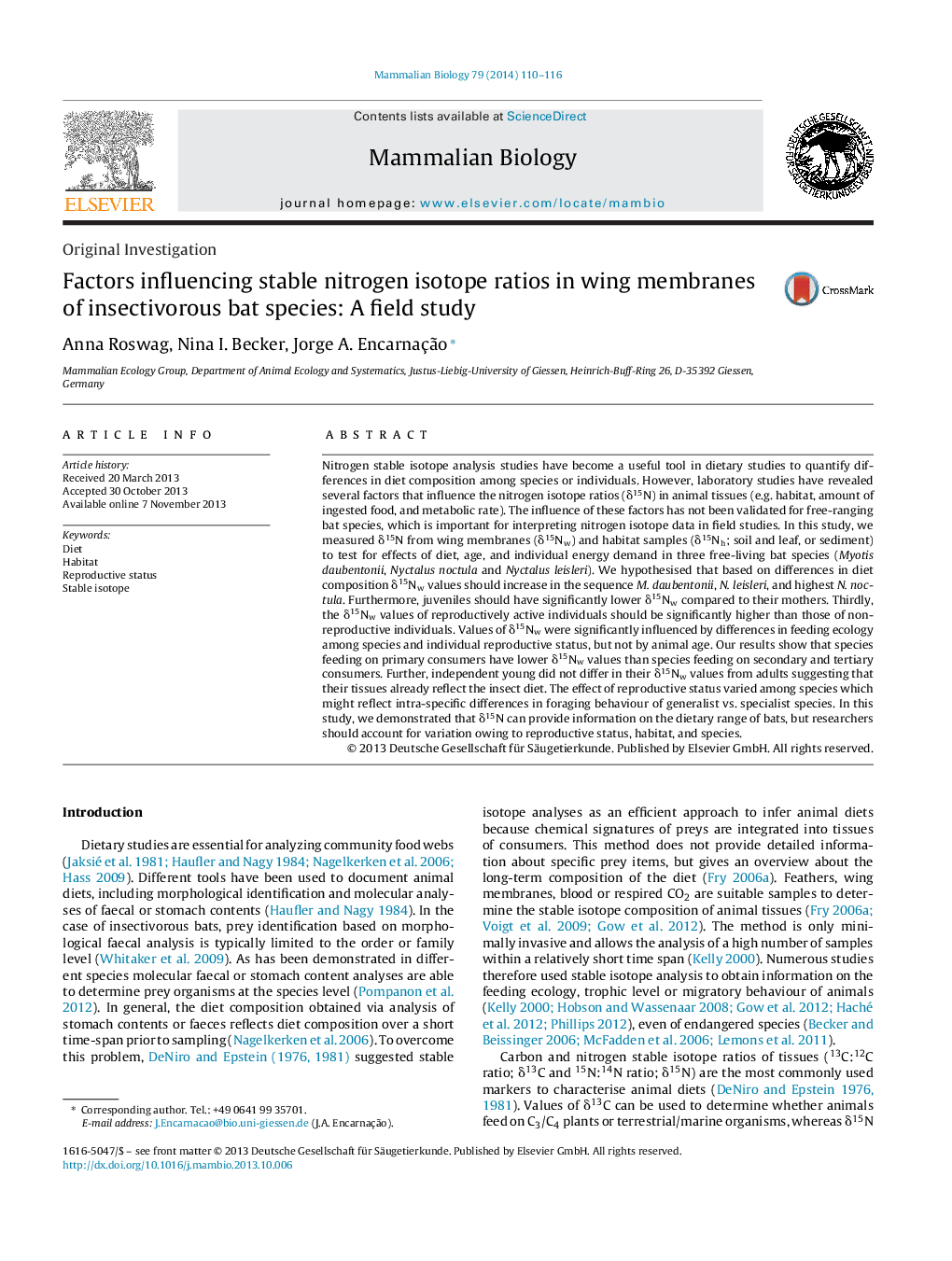| Article ID | Journal | Published Year | Pages | File Type |
|---|---|---|---|---|
| 2193676 | Mammalian Biology - Zeitschrift für Säugetierkunde | 2014 | 7 Pages |
Nitrogen stable isotope analysis studies have become a useful tool in dietary studies to quantify differences in diet composition among species or individuals. However, laboratory studies have revealed several factors that influence the nitrogen isotope ratios (δ15N) in animal tissues (e.g. habitat, amount of ingested food, and metabolic rate). The influence of these factors has not been validated for free-ranging bat species, which is important for interpreting nitrogen isotope data in field studies. In this study, we measured δ15N from wing membranes (δ15Nw) and habitat samples (δ15Nh; soil and leaf, or sediment) to test for effects of diet, age, and individual energy demand in three free-living bat species (Myotis daubentonii, Nyctalus noctula and Nyctalus leisleri). We hypothesised that based on differences in diet composition δ15Nw values should increase in the sequence M. daubentonii, N. leisleri, and highest N. noctula. Furthermore, juveniles should have significantly lower δ15Nw compared to their mothers. Thirdly, the δ15Nw values of reproductively active individuals should be significantly higher than those of non-reproductive individuals. Values of δ15Nw were significantly influenced by differences in feeding ecology among species and individual reproductive status, but not by animal age. Our results show that species feeding on primary consumers have lower δ15Nw values than species feeding on secondary and tertiary consumers. Further, independent young did not differ in their δ15Nw values from adults suggesting that their tissues already reflect the insect diet. The effect of reproductive status varied among species which might reflect intra-specific differences in foraging behaviour of generalist vs. specialist species. In this study, we demonstrated that δ15N can provide information on the dietary range of bats, but researchers should account for variation owing to reproductive status, habitat, and species.
